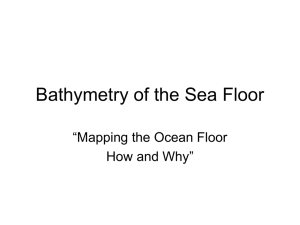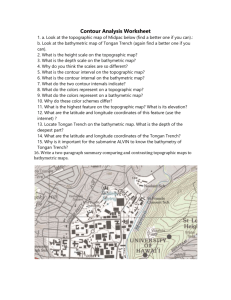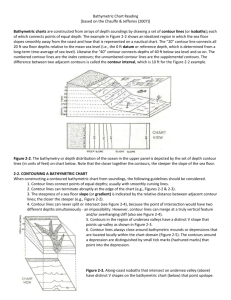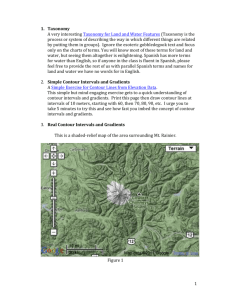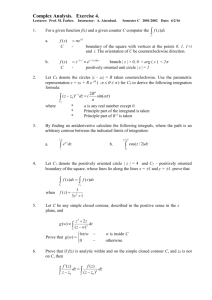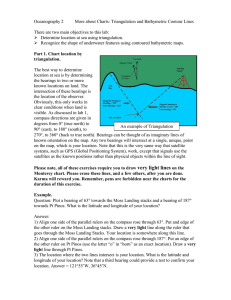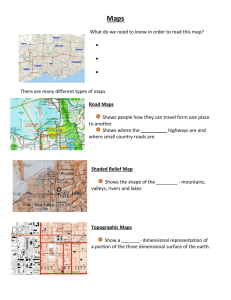Bathymetric and topographic maps
advertisement
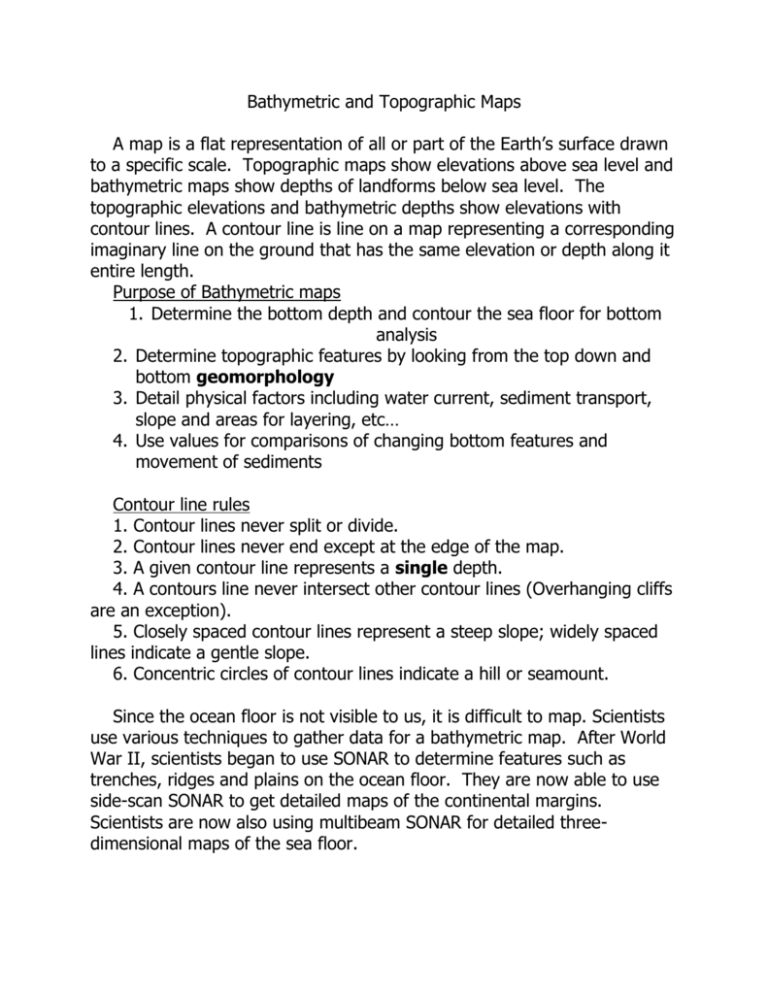
Bathymetric and Topographic Maps A map is a flat representation of all or part of the Earth’s surface drawn to a specific scale. Topographic maps show elevations above sea level and bathymetric maps show depths of landforms below sea level. The topographic elevations and bathymetric depths show elevations with contour lines. A contour line is line on a map representing a corresponding imaginary line on the ground that has the same elevation or depth along it entire length. Purpose of Bathymetric maps 1. Determine the bottom depth and contour the sea floor for bottom analysis 2. Determine topographic features by looking from the top down and bottom geomorphology 3. Detail physical factors including water current, sediment transport, slope and areas for layering, etc… 4. Use values for comparisons of changing bottom features and movement of sediments Contour line rules 1. Contour lines never split or divide. 2. Contour lines never end except at the edge of the map. 3. A given contour line represents a single depth. 4. A contours line never intersect other contour lines (Overhanging cliffs are an exception). 5. Closely spaced contour lines represent a steep slope; widely spaced lines indicate a gentle slope. 6. Concentric circles of contour lines indicate a hill or seamount. Since the ocean floor is not visible to us, it is difficult to map. Scientists use various techniques to gather data for a bathymetric map. After World War II, scientists began to use SONAR to determine features such as trenches, ridges and plains on the ocean floor. They are now able to use side-scan SONAR to get detailed maps of the continental margins. Scientists are now also using multibeam SONAR for detailed threedimensional maps of the sea floor.

